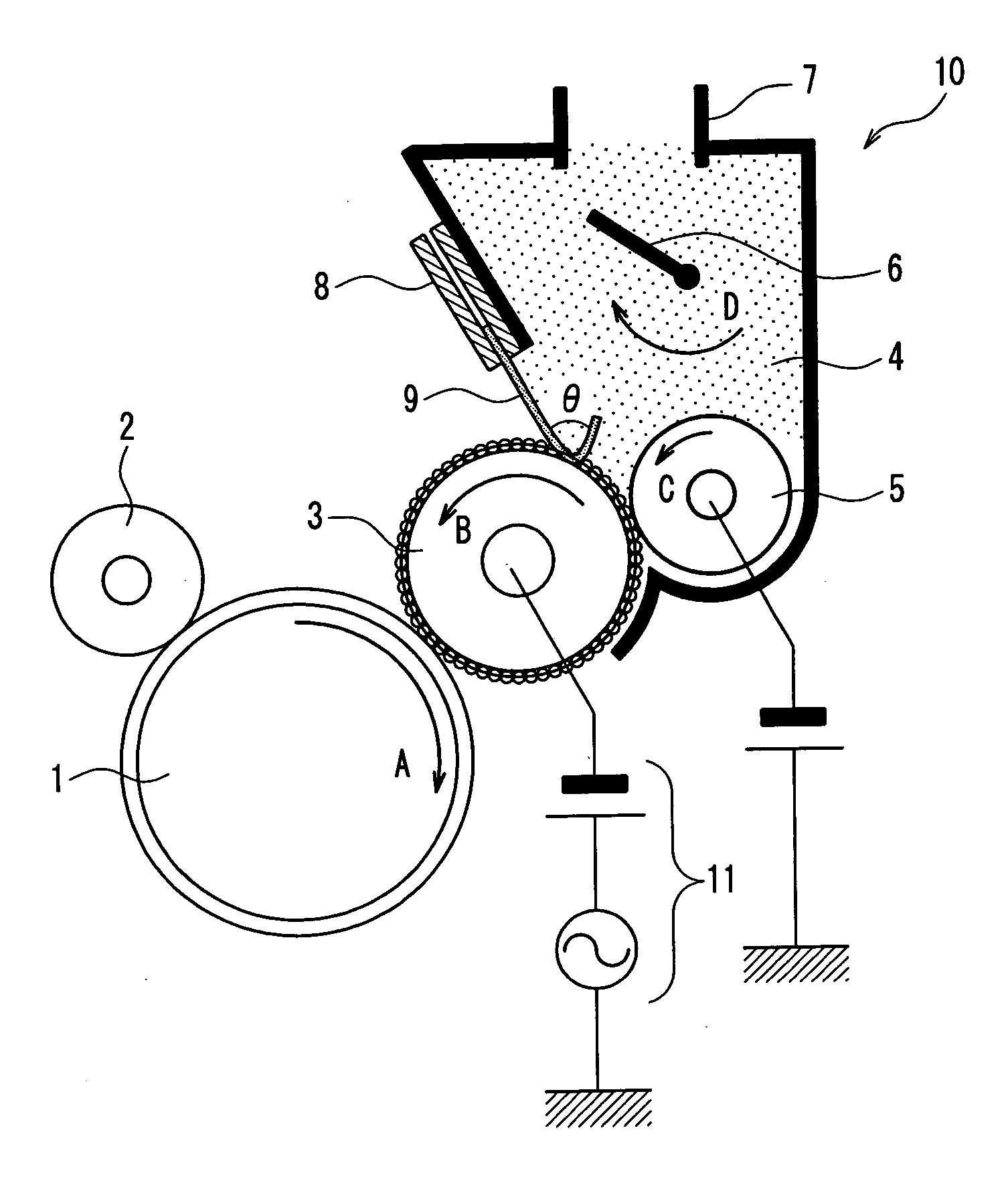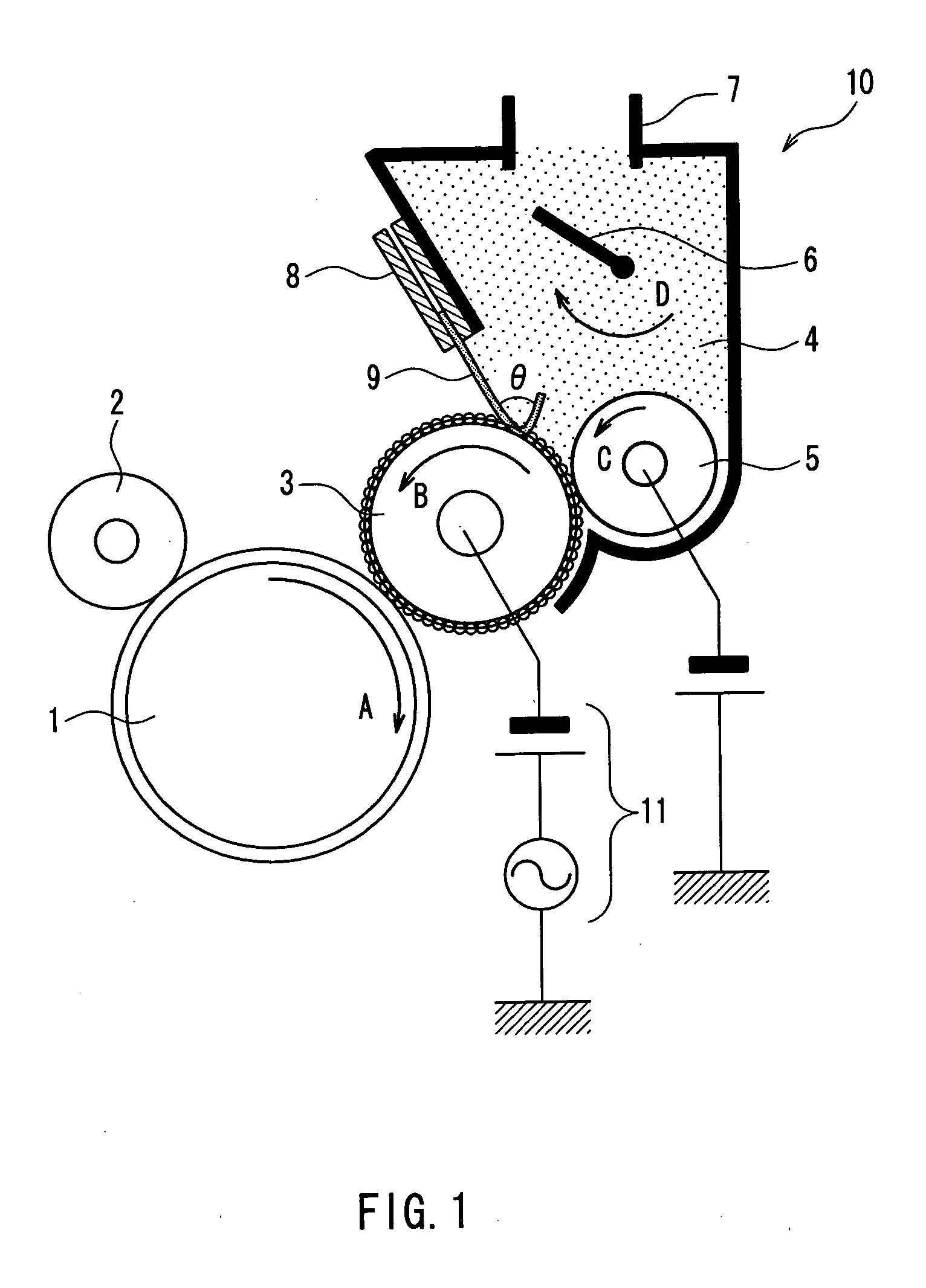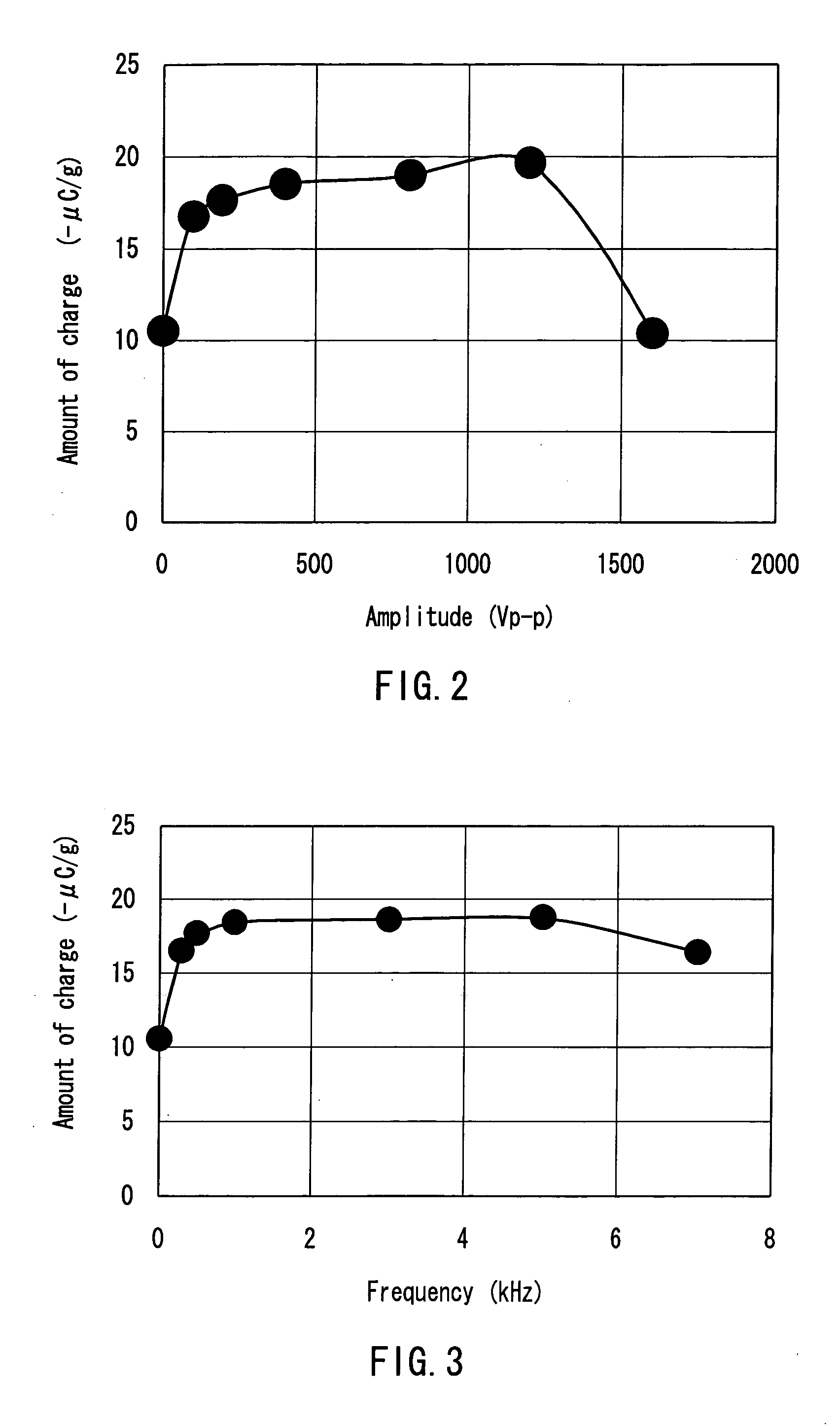Developing apparatus
a technology of developing apparatus and development apparatus, which is applied in the direction of electrographic process apparatus, instruments, developers, etc., can solve the problems of increasing image density, uneven image density, and reducing image density in solid image portions, so as to prolong life
- Summary
- Abstract
- Description
- Claims
- Application Information
AI Technical Summary
Benefits of technology
Problems solved by technology
Method used
Image
Examples
embodiment 1
[0051] Embodiment 1 will be described with reference to Working Example 1. As an apparatus for image evaluation serving as Working Example 1, KX-CL500 (manufactured by Panasonic) whose developing apparatus part was modified was used. This machine operates at a processing speed of 100 mm / s and is capable of printing 16 sheets of A4 paper per minute. Various numerical values, materials, and so on that are given below as an example belong to this working example.
[0052]FIG. 1 is a cross-sectional view showing the principal part of a developing apparatus 10 according to Embodiment 1 of the present invention. The developing apparatus 10 is a one-component development type developing apparatus that uses a toner for rendering an electrostatic latent image visible.
[0053] A photosensitive drum 1, which is an electrostatic latent image holding member, is a layered organic photoreceptor. It has an outer diameter of 24 mm, and is made to rotate in a direction shown by the arrow A at a circumfe...
embodiment 2
[0119] In Embodiment 2, the conditions to which the surface of the development roller 3 was polished were changed. The surface roughness was Rz=2 μm in Working Example 1 described above, whereas the surface roughness was set to 3 μm in working Example 2, 5 μm in Working Example 3, 10 μm in Working Example 4, 15 μm in Working Example 5, 20 μm in Working Example 6, and 25 μm in Working Example 7. The average spacing S between local crests was set to 40 μm in all of these working examples. Regarding Working Examples 2 to 7, the same evaluation as that shown in Table 1 above was conducted. Table 2 below shows the evaluation results.
TABLE 2UnevennessAmountofSurfaceofLayerImageimageWhiteRoughneschargethicknessdensitydensityFoggingstripes / BlackRz(μm)(μC / g)(mg / cm2)(ID)(3σ)Δ %stripesWorking2Beginning−18.50.411.410.0520.5GoodEx. 1After−15.50.371.360.0790.9Good30,000sheetsWorking3Beginning−20.50.431.440.0450.3GoodEx. 2After−18.20.421.470.0550.6Good30,000sheetsWorking5Beginning−20.80.411.430....
embodiment 3
[0126] In Embodiment 3, Working Example 8 in which the surface roughness of the development roller Rz=5.0 μm and the average spacing S between local crests was 70 μm was produced. Table 3 below shows the evaluation results at the beginning and after 30,000 sheets.
TABLE 3UnevennessAmountofAverageofLayerImageimageWhiteSpacingchargethicknessdensitydensityFoggingstripes / BlackS(μm)(μC / g)(mg / cm2)(ID)(3σ)Δ %stripesWorking40Beginning−20.80.411.430.0420.3GoodEx. 3After−18.80.391.430.0510.5Good30,000sheetsWorking70Beginning−24.10.421.430.0350.2GoodEx. 8After−23.60.431.420.0320.2Good30,000sheets
[0127] From the results in Table 3, it is found that in Working Example 8, the amount of charge is improved more, fogging decreases more, and also unevenness of the density is improved more than in Working Examples 3 in which the average spacing S between local crests was 40 μm.
[0128] Furthermore, development rollers in which the average spacing S between local crests was set to 50, 70, 100, 120, 150...
PUM
 Login to View More
Login to View More Abstract
Description
Claims
Application Information
 Login to View More
Login to View More - R&D
- Intellectual Property
- Life Sciences
- Materials
- Tech Scout
- Unparalleled Data Quality
- Higher Quality Content
- 60% Fewer Hallucinations
Browse by: Latest US Patents, China's latest patents, Technical Efficacy Thesaurus, Application Domain, Technology Topic, Popular Technical Reports.
© 2025 PatSnap. All rights reserved.Legal|Privacy policy|Modern Slavery Act Transparency Statement|Sitemap|About US| Contact US: help@patsnap.com



